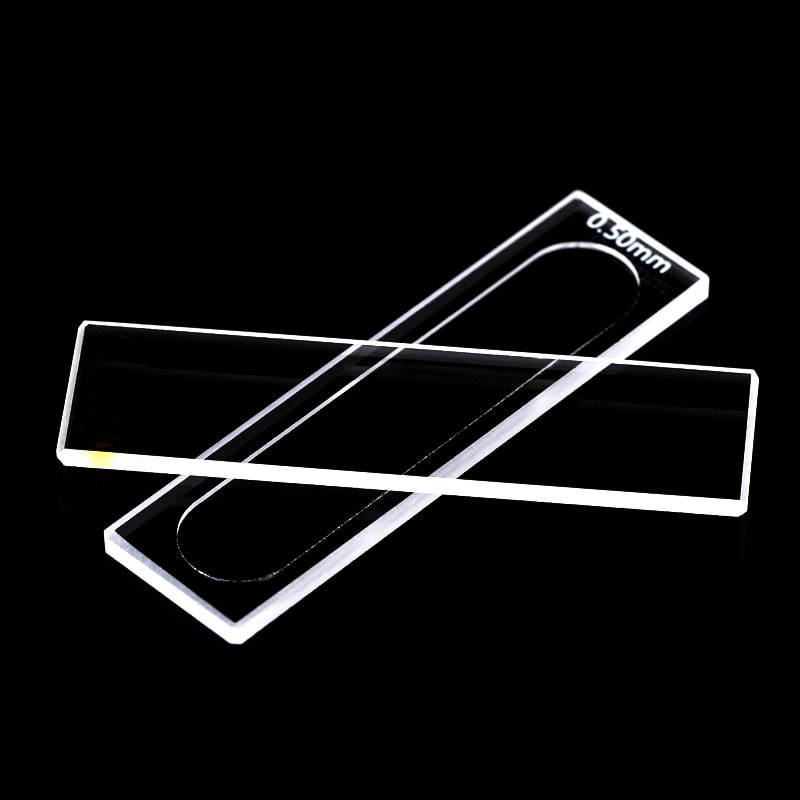The spectrophotometry method is a fundamental element of discovery in science. It is a way to discover the secrets of the absorption of light and transmission across specific wavelengths. The cuvette is the core of spectrophotometry, a simple yet crucial vessel used to hold samples for analysis. They may seem basic, but their specifics, from cuvette path length to material choice, hold the key to gaining accurate data on substance concentration and quality. Explore the fascinating world of cuvettes, and their dimensions. They can affect the results of all research.

Image credit: cuvet.co
The Power of Cuvette Path Length
Imagine an light beam moving through a fluid sample. The outcome is dependent on the size of the cuvette, or the distance at which the light travels. A standard 1cm path length cuvette can be used by many labs, finding a compromise between the sensitivity of the instrument and its practicality. Why is this important? The longer the distance extended, the greater amount of light will be taken in. This can increase the amount of light absorbed by dilute samples. A shorter path can make a significant difference when using concentrated solutions such as proteins or nucleic acid. It can reduce the requirement for dilution while preserving precious samples while cutting down on preparation time. What’s the primary takeaway from this? The art of matching path length to sample requirements is subtle and enhances the reliability.
Cuvette Dimensions A Look at More Than What Meets the eye
Cuvette size isn’t just about how much liquid fits inside it’s about how the vessel interacts with the spectrophotometer. Each container is made to perform particular tasks and comes in a variety of shapes and sizes. Semi-micro cuvettes have smaller sizes however, they have thicker walls. They are suitable for smaller sample volumes. Thicker walls reduce the internal space, allowing light to flow through a condensed sample, without wasting a drop. When comparing this with a cuvette standard, the difference is striking with fewer pipetting steps as well as fewer mistakes and outcomes that are long-lasting. This clever trick proves the size isn’t just a number but the strategy behind it.
The 1cm length of the path Cuvette is a lab favorite
What is the reason why the 1cm cuvette path length is so popularly used for experiments? It’s the perfect size for biological measurement, since there are a lot of samples and every milliliter counts. This design is a classic and provides reliable reads of absorbance while not overloading the detector. It’s perfect for all kinds of tests, from DNA purity tests to enzyme assays. However, it’s not a universal model. Change it out for another cuvette that has a different path length or geometry like one meant for emission studies and the data can skew dramatically. It is important to choose the right tool, and not the one that you are most comfortable with. A mismatched instrument is similar to a cuvette which isn’t matched.
Material Matters: More than Size and Path
Cuvette dimensions are only half of the tale. The choice of the material is the most important part. Quartz and glass cuvettes are renowned for their excellent rate of light transmission. They’re durable, reusable and are ideal for tough spectroscopy jobs. On the flip side plastic cuvettes provide affordability and convenience to the table. Use and throw away. You don’t have to clean the cuvettes, and there’s no chance of cross contamination. They’re great to conduct quick DNA or RNA tests and aqueous solution. What’s the tradeoff? A lower level of accuracy for certain wavelengths. Quartz is the preferred choice for purists. Plastic is the material of choice for those who are practical.
Accuracy in Practice
The great thing about cuvettes is in their flexibility. Smaller length paths paired with spacers handle concentrated samples with precision, while larger vessels are able to handle greater amounts. Any choice in length, size and material will ripple through the lab making clear the outcomes. Imagine a laboratory analysing the amount of protein. A semimicro cuvette offers shorter pathways, which removes the need for dilution and produces reliable data more quickly. If you compare it to an inexperienced cuvette swap and you see results that are not as clear, it’s no wonder. This is a great reminder that the smallest of factors can have an enormous impact on spectrophotometry.
Cuvettes may be small, however, their function is huge. From the 1cm path length cuvette, to custom-designed dimensions which bridge the gap between sample and understanding. Whether chasing purity or concentration with the proper cuvette, it can transform the best measure into a fantastic evidence that in science, precision begins with the instruments at disposal.